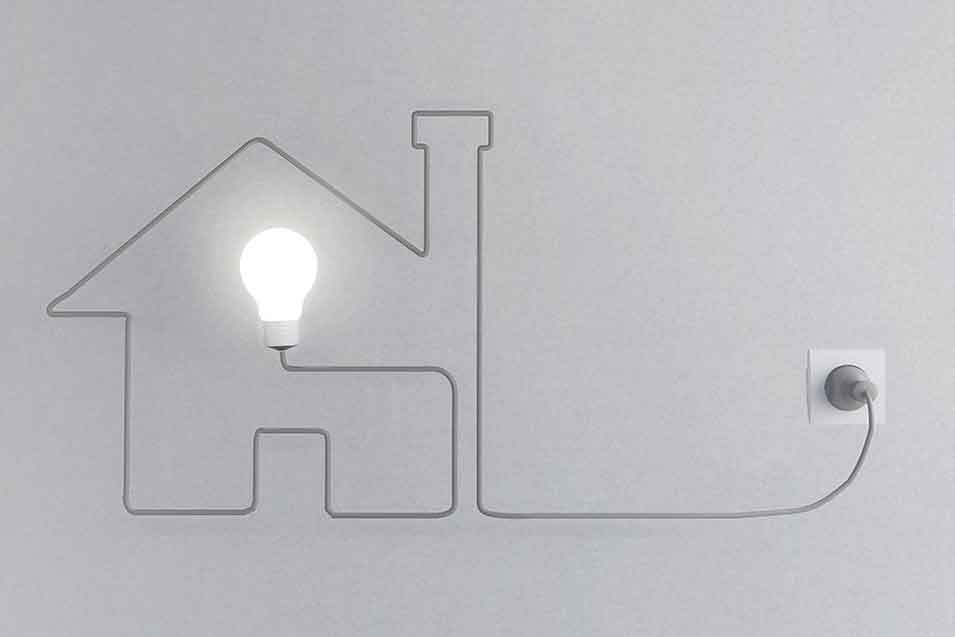
What are the steps to be followed for rewiring a house in India?
Upgrading wires and electrical devices in your home at regular intervals not only helps in preventing recurring electrical issues but also keeps you safe from electrical hazards. Rewiring homes with modern wires or devices can also reduce electricity consumption. However, electrically rewiring a house in India can be a daunting task and it requires technical knowledge and assistance. Here are some essential steps for rewiring a house:
- Planning:- The first step in rewiring whole house is planning the wiring layout. Say, if you are doing a complete renovation or building a new house, then you will need to decide the number of electrical systems, and the location for electrical points like switches, sockets, and light fixtures.
- Obtaining necessary permits:- Prior to commencing any electrical or home rewiring, it is crucial to obtain the essential permits from the local electricity board or authority. Your electricians can assist you in obtaining the necessary permits and ensure that the work is performed in compliance with the codes and regulations.
- Shutting down the main power:- Before getting started with any rewiring or electrical work at the house, make sure to turn off the power supply to the house from the main switchboard.
- Getting rid of old wiring:- Next step is to remove the existing house electrical wiring and electrical fixtures safely and carefully. This step ensures that your new wiring is installed properly.
- Installing new wiring:- Post the removal of existing wiring, the electricians will start with the installation of new wiring and electrical fixtures as per the planned layout. Make sure to use branded wires and fixtures and follow safety guidelines while installing new wires.
- Testing:- Once through with rewiring, test the wiring and electrical fixture to ensure that they are working properly. This will involve testing each outlet, switch, circuit connection, insulation, and grounding to rule out any problems or safety issues.
- Inspecting:- After testing, get the installation inspected by a qualified electrical inspector to ensure that the rewiring complies with all safety standards and regulations.
- Connecting power supply:- The last and final step is connecting the power supply to the house and testing the fixtures once again to ensure everything is working fine.
Conclusion
Rewiring a house can be dangerous and hence it is important to hire a well-qualified and experienced electrician. Hiring a professional electrician will ensure the job is done safely and effectively. Following the steps outlined above will help ensure that the rewiring is done correctly as per the rules and regulations.

Frequently Asked Questions (FAQs) About Electrical Rewiring of Homes:
Q1. What type of house needs rewiring?
There are several reasons why a house may need rewiring. Following are some of the primary reasons:
- If your house has older electrical systems, rewiring can ensure that your electrical system is safe and capable of meeting your current and future needs.
- If you’re experiencing circuit breakers tripping, flickering lights, outlets or switches not working correctly, or signs of electrical damage like exposed wires, it could be an indication of faulty or damaged wiring.
- If your electrical system is unable to meet the power demands of modern appliances, electronics, or additions to your house, it may be a sign that your wiring needs an upgrade.
Q2. What are the steps to rewire a house?
“Rewiring a house is a complex task. The following are the basic steps to consider when rewiring a house:
- Assessment & Planning: Thoroughly assess the existing electrical system with the help of an electrician and create a rewiring plan based on the assessment and your budget.
- Before rewiring, temporarily disconnect the power connection and remove the old wiring, outlets, switches, and any other outdated or unsafe components.
- Remove the old wiring, outlets, switches, and any other outdated or unsafe components.
- The electrician will install new electrical wiring throughout the house, following the rewiring plan.
- After the installation, test and inspect the new wiring, outlets, switches, and light fixtures. Once everything is deemed safe and in proper working condition, restore the power supply to your home.”
Q3. What are the 3 basic rules of wiring?
The three basic rules of wiring are as follows:
- Make proper connections when wiring electrical circuits. This involves correctly joining wires together, connecting them to devices or outlets, and using appropriate connectors or terminals.
- The size or gauge of the wire used for a particular electrical circuit must be appropriate for the amount of current it will carry. If the wire is too small for the load, it can overheat and cause a fire hazard. On the other hand, if the wire is too large, it can be wasteful and unnecessarily expensive.
- Safety is the most important rule when it comes to wiring. It involves ensuring that all wiring installations are done in a manner that minimizes the risk of electrical hazards such as shocks, fires, or other accidents.
Q4. When should electrical wiring be replaced in India?
In India, electrical wiring should be replaced if the wiring in the house is old and shows signs of degradation, such as frayed insulation, cracked or brittle wires, or corroded connections. If your circuit breakers trip frequently or lights flicker, it is advisable to consider rewiring your home. Additionally, rewiring can be considered when undertaking significant renovations or remodeling projects in a building.
Q5. What happens when a house is rewired?
When a house is rewired, it involves replacing the existing electrical wiring system throughout the entire house. This process improves electrical safety, ensures compliance with current electrical standards, and enables the safe and efficient use of modern appliances and technology. It provides peace of mind to homeowners by reducing the risk of electrical hazards such as fires, shocks, or electrical failures.

